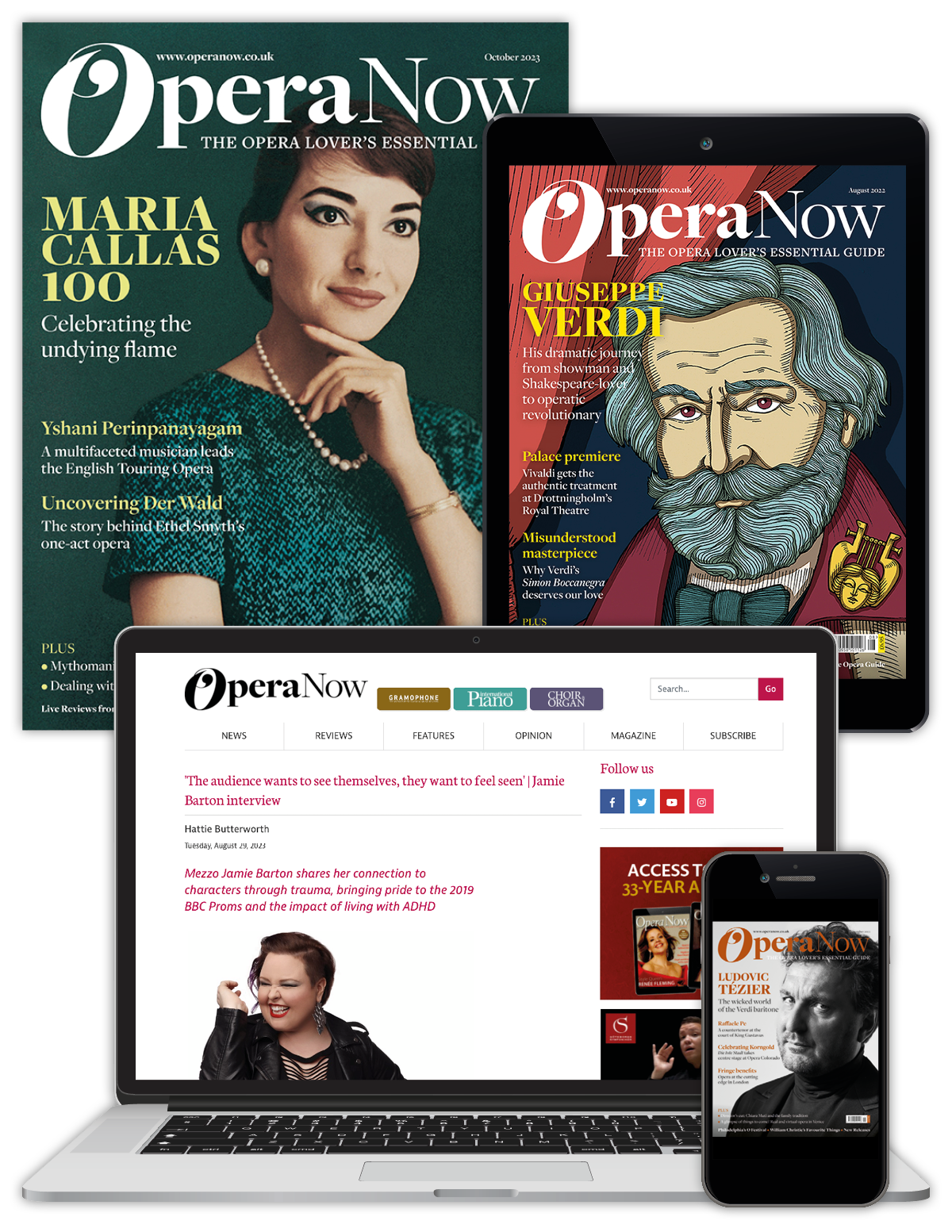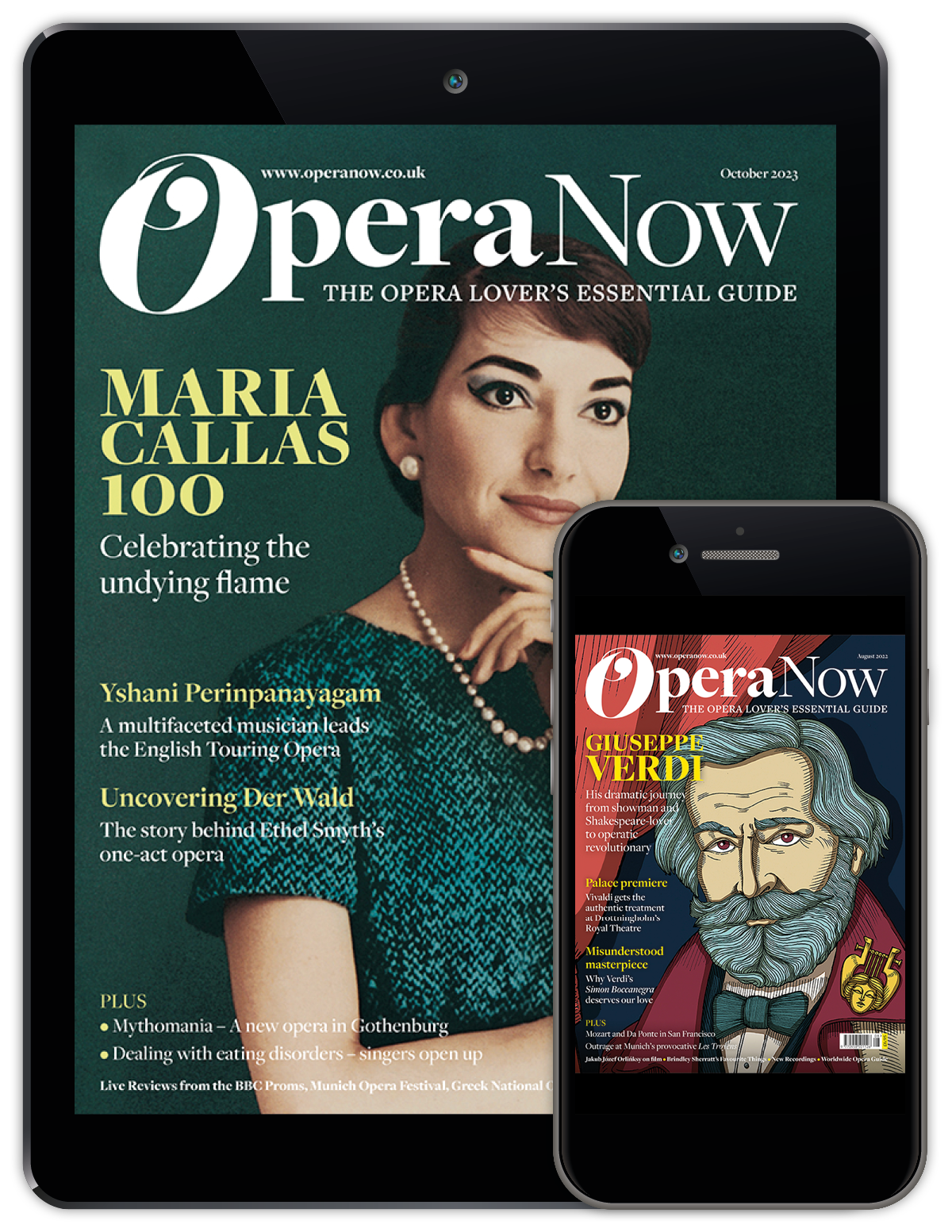Wagner: The Ring Cycle at Longborough Festival Opera
Gavin Dixon
Thursday, July 18, 2024
The Cotswold opera company celebrates its 30th anniversary with a performance of Wagner's great works
⭐️⭐️⭐️⭐️
Wagner fanciers will need no introduction to Longborough Festival Opera. The north Cotswolds company this year celebrates its 30th anniversary, and although their repertoire is broad, they have made a speciality out of Wagner, repeatedly demonstrating that his operas are well within the reach of a small summer festival. This year, Longborough presented three full performances of its Ring cycle, the second production the company has staged, a remarkable achievement. Just as remarkable is the consummate mastery that these performances displayed, with Wagner’s vision fully realised, and on a suitably epic scale.
Director Amy Lane has devised a visual spectacle that relies more on video effects and dramatic lighting than on mechanical stagecraft. The set consists of a crescent of raised staging, from which gods and giants tower over dwarves and humans below. The backdrop is a screen, onto which atmospheric images are projected. Video designer Tim Baxter provides stylised settings – Valhalla, Fafner’s cave, the Rhine – and also moodily abstract effects, like the image of rain lashing against a darkened window to frame the Gibichung Hall. Costumes (Designer Emma Ryott) evoke the 19th century, tending towards goth for the Valkyries and steampunk for the Nibelungen. Lighting Designer Charlie Morgan Jones focusses attention with powerful spotlights directly from above, bringing a sense of transcendence to the key moments: Siegmund claiming Nothung, Siegfried’s Funeral Music, even the Gods’ Entry into Valhalla.


Charne Rochford, Mark Le Brocq, Paul Carey Jones in Das Rheingold at Longborough Festival Opera | Photo credit: Matthew Williams-Ellis
Das Rheingold is an ensemble opera, and Longborough demonstrate from the start that they are casting from a position of strength. The bumbling Alberich of Mark Stone may lack some gravitas, but his rich baritone has the weight for the part. His playful frolicking with the Rhinemaidens is an early indicator of the overt humour that runs through this production. Director Lane never wastes an opportunity for levity, an engaging approach, especially in such a small venue. That comedic tendency continues through to the Loge of Marc Le Brocq. Where many productions present Loge as skittish and hyperactive, here he is more debonair. He is certainly active, but his movement around the languorous gods is through sidesteps and shuffles, all timed closely to the music, as if he is mocking their every action. He plays it like Willy Wonka, and it works brilliantly.
Strong casting for the gods proper as well. Madeline Shaw is imperious as Fricka, Eleanor Dennis tender as Freia and Mae Heydorn mysterious but imposing as Erda (Heydorn later returns as the First Norn – luxury casting indeed). The Erda scene is an impressive piece of stagecraft, her appearance and disappearance achieved through some combination of screens and lights, a perfect trompe l'oeil that continues to deceive even for her later appearance in Siegfried.


Eleanor Stephenson, Eera Gupta in Das Rheingold at Longborough Festival Opera | Photo credit: Matthew Williams-Ellis
Leading this impressive cast from the top was Paul Carey Jones as Wotan. Jones completely embodies the role, even sporting the appropriate Gandalf hair and beard. His voice is perfect, evenly supported across the broad tessitura, and with a weight of tone that brings gravity even to his highest register. His acting too is always convincing engaging and immediate. On the strength of this performance, he must rank as one of the finest of Wotans of our time.
Lockdown restrictions interrupted the rollout of this production, with the result that the Walküre was presented for the first time as part of this year’s full cycles. A video of the new production will be available to view on the OperaVision platform later in the year. We meet another strong cast, although the chemistry doesn’t work as effectively in the first act. Mark Le Brocq returns as Siegmund. He is not as convincing here dramatically, although he clearly has the resources for the heightened vocal demands of this second role. Emma Bell has a colossal voice as Sieglinde, a Brünnhilde voice really, imposing but lacking the fragility that the role requires. And Julian Close has the blackest voice you will ever hear in the role of Hunding, but he lacks menace, and there is little to suggest violence or coercion. One nice touch though: as Sieglinde leaves with Siegmund, she writes Hunding a goodbye note. This then becomes the incriminating evidence that Erda presents to Wotan, and then Wotan to Brünnhilde.


Rebecca Afonwy-Jones, Katie Stevenson, Mari Wyn Williams in Das Rheingold at Longborough Festival Opera | Photo credit: Matthew Williams-Ellis
The company takes pride in its nurturing of young talent, and this year’s Brünnhilde, Lee Bissett, has come up through the ranks. She has been performing with the company since 2007, and in Ring performances alone has sung Freia, Sieglinde and Gutrune. She has the full vocal range for Brünnhilde (some shrillness on the top register is easily overlooked) and acts the role with equal conviction: She and Paul Carey Jones are a dream team for the final act. The Magic Fire is represented by a structure built from the Valkyries’ spears. Unfortunately, the spears kept falling off, obliging the singers, both here and in Siegfreid Act III, to continually reattach them and pretend it was all deliberate.
Intentional comedy returns at the start of Siegfried. Mime is played for laughs by Adrian Dwyer, whose voice is relatively light but a good fit for the part. When Mime mixes the potion, he puts on a chef’s hat and pinny, the scene coming close to pantomime. Meanwhile, Bradley Daley gives a convincing performance as Siegfried. He certainly looks the part, and his voice has the ideal metalled tone of a Heldentenor, although it lacks support and his upper range is uneven.
Themes of power and control are subtly conveyed throughout this production. Presenting Mime as a buffoon serves to underline how he is merely carrying out the will of Alberich. Often Wotan will constrain other characters with hand gestures, as if controlling their movements with invisible strings. The Woodbird is presented as Wotan’s emissary. Fflur Wyn is dressed in a morning suit – Wotan’s secretary perhaps? – with just oversized eyelashes to attest her avian nature. Vocally, this is another excellent piece of casting, Wyn easily broaching the high register with a sweet, natural tone.


Julian Close in Götterdämmerung at Longborough Festival Opera | Photo credit: Matthew Williams-Ellis
For Götterdämmerung, Julian Close, our Hunding, returns as Hagen, this role a much better fit. Hagen now replaces Wotan as the unseen power guiding the drama. Tall and gaunt, Close stands out, even in the large ensembles of this final opera. His dark tone and impressive projection allow him to dominate musically too – his ‘Hoiho!’ calls are chilling. Benedict Nelson has an elegant, lyrical tenor and portrays Gunther as an affable toff, a Bertie Wooster type, at least until Hagen murders Siegfried, when the veneer of civility falls away. Laure Meloy has the right attractive voice for Gutrune, though this production makes little of either her victimhood or complicity. Waltraute’s monologue is more compelling, an impassioned and full-voiced performance from Claire Barnett-Jones. A mention too for the Longborough Community Chorus, formed through the company’s outreach programme and bolstering the chorus of vassals to a near professional standard in Act II.
With minimal props and visual effects, it is down to Lee Bisset to carry off the Immolation Scene, which she does effectively through the sheer emotive power of her performance, the audience hanging on her every word. The ending itself was a kind of dream sequence reunion for all the characters, a nebulous but endearing conclusion.
The LFO Orchestra were on fine form throughout these performances, offering richly textured support to the singers. Understandable economies have been exercised in the pit, with double rather than triple woodwinds, no Wagner tubas and only two harps. That puts greater demands on the players, especially the brass, who sometimes lacked finesse. Excellent solos, though, from each of the principals. Having the winds recessed deep in the pit favours the string sound, and the strings excelled, especially the cellos and basses, whose warm bass lines offered valuable continuity throughout each of the acts.
Conductor Anthony Negus is clearly the soul of this project. His decades of experience with Wagner’s music shone through in every bar, his readings expansive and generous. The way he holds silences between phrases at key moments speaks of a bold confidence, as do the broad dynamic swells with which he shapes phrases. The singers are guided with a sure hand and the orchestra is nurtured to produce the broad, generous sound that is the hallmark of his approach. Negus will lead Pelléas et Mélisande in 2025, Tristan und Isolde in 2026 and Meistersinger in 2027, ideal works to showcase this company’s estimable strengths.






